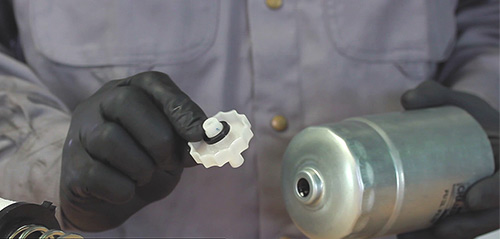 South Africa (English)
South Africa (English)
Did you know that condensation in your diesel engine can get into your fuel system, contaminating your diesel? This is a less of a problem for petrol cars, as diesel engines (unlike petrol engines) don’t have vapor pressure to displace air. In other words, as the fuel tank heats up, the air expands and is forced out. Unfortunately, when the tank cools down, humid air is sucked back into the tank and water condenses on the cooler tank walls.
And, this isn’t the only way that water can enter your diesel fuel. Other possible ways for your fuel to become contaminated include: human error, ingress during refuelling and water leakage into the tank.
What are the dangers of having water in your fuel?
Having water in your fuel can cause a variety of different problems:
- Rust: water combined with iron and steel surfaces causes rust. Small particles of rust that get into the fuel can cause abrasive wear to parts, leading to part failure.
- Corrosion: water combined with acids in the fuel can corrode both ferrous and non-ferrous metals. The effects are even worse when abrasion exposes fresh metal surfaces that corrode easily.
- Abrasion: water has a lower viscosity than diesel, so doesn’t lubricate moving parts as well as diesel does. The result is increased wear.
- Pitting: water flashing on hot metal surfaces causes pitting on components.
- Microbial growth: water encourages microbial growth, which can create slimes that dirty your fuel and acids that corrode your tank and fuel system.
- Unable to start: diesel contaminated by water can damage the injection system which prevents the engine from starting.
Diesel filter water separator
The solution is a diesel filter water separator (see diagram). It contains a filter with hydrophobic characteristics, so that water can’t pass through, and a tap to drain water. As water is denser than fuel, it collects at the bottom of the filter, making it easy to remove.

How to drain water from your diesel filter water separator
To drain water from your diesel filter water separator, release the vent valve positioned at the top of the filter housing. If there isn’t a valve, loosen the uppermost fuel pipe from the filter housing. Hold a jar under the drain plug or tap and loosen the plug or tap. Let the filter drain until clean diesel fuel flows out then close the plug or tap and then close the vent valve.

Garage Gurus expert tips
- Some cars are equipped with a Fuel in Water (FIW) sensor to indicate when there is a substantial amount of water in the fuel filter.
- Fuel filters lose their efficiency over time, so remember to replace the filter according to the maintenance instructions for your car’s make and model.
More expert tips
Discover more expert tips from our Garage Gurus with our diesel filter water separator training course. Find out more here.
And, if you’d like to watch our experts draining a diesel filter water separator and undertaking a range of other maintenance tasks, visit the Garage Gurus YouTube channel.
The content contained in this article is for entertainment and informational purposes only and should not be used in lieu of seeking professional advice from a certified technician or mechanic. We encourage you to consult with a certified technician or mechanic if you have specific questions or concerns relating to any of the topics covered herein. Under no circumstances will we be liable for any loss or damage caused by your reliance on any content.































